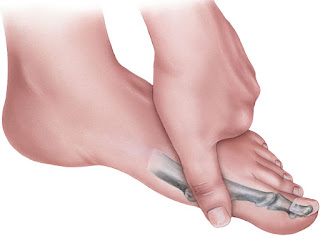Understanding and Treating Hallux Rigidus: A Comprehensive Guide
Introduction: Hallux rigidus is a condition that affects the big toe joint, causing stiffness, pain, and limited motion. However, early detection and intervention can significantly improve outcomes and potentially delay or avoid the need for surgery. This article aims to provide insights into the treatment options available, including both conservative measures and surgical interventions, along with factors influencing the choice of treatment.
Treatment Options:
Ultrasound Therapy and Physical Therapy:
- These modalities can offer temporary relief by reducing pain and improving joint mobility.
Custom Orthotics:
- Orthotic devices can optimize foot function and relieve pressure on the big toe joint, promoting better alignment and reducing discomfort.
Proper Footwear:
- Shoes with a wider toe box and stiff soles are recommended to alleviate pressure on the affected joint. High heels should be avoided to prevent exacerbating symptoms.
Injection Therapy:
- Injections, such as corticosteroids or hyaluronic acid, may be administered to reduce pain and inflammation in the affected joint.
Medications:
- Nonsteroidal anti-inflammatory drugs (NSAIDs) or other pain-relieving medications may be prescribed to alleviate symptoms.
Dietary Supplements:
- Some individuals may benefit from supplements like glucosamine-chondroitin, which can support joint health and reduce inflammation.
Factors Influencing Surgical Decision:
- Age: Younger patients may have different surgical considerations compared to older individuals.
- Cause of the Disorder: Understanding the underlying cause of hallux rigidus can guide treatment decisions.
- Severity of the Disorder: The extent of joint damage and functional impairment will influence the choice of surgical intervention.
- Occupation and Activity Level: Patient lifestyle and demands on the foot joint play a crucial role in determining the most suitable surgical approach.
Surgical Interventions:
Joint Preservation Procedures:
- These techniques aim to clean up the joint, remove bone spurs, and improve joint alignment to restore function and reduce pain.
Joint Fusion (Arthrodesis):
- Fusion of the big toe joint involves joining the bones together to eliminate painful motion and stabilize the joint. This is often considered for advanced cases where joint preservation is not feasible.
Joint Replacement (Arthroplasty):
- In cases where joint damage is severe, partial or total joint replacement may be necessary to restore function and alleviate pain. Implants may be used to replace damaged joint surfaces.
Conclusion: Early detection and a comprehensive approach to treatment are essential for managing hallux rigidus effectively. Conservative measures such as physical therapy, orthotics, and medication can provide symptomatic relief, while surgical intervention may be considered for advanced cases. By addressing individual factors and tailoring treatment plans accordingly, healthcare providers can optimize outcomes and improve the quality of life for individuals affected by this condition.



Comments
Post a Comment